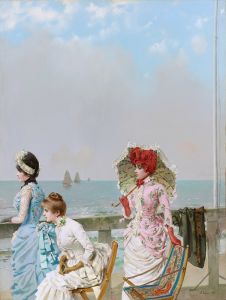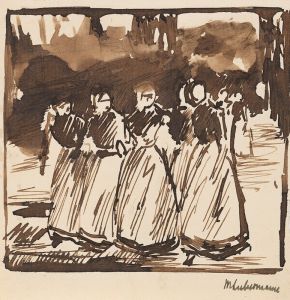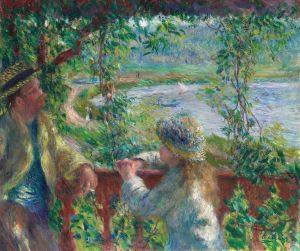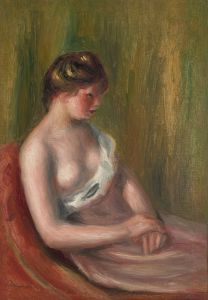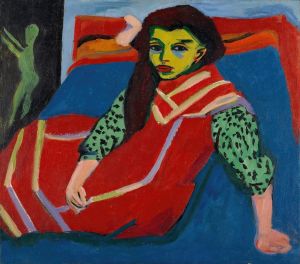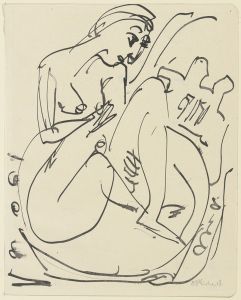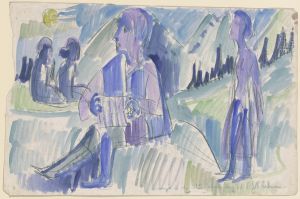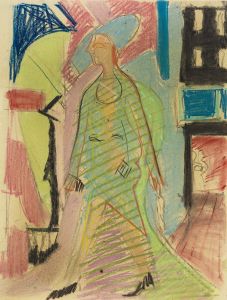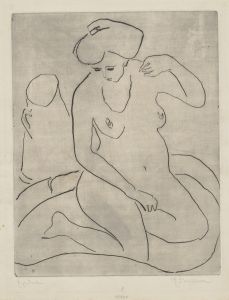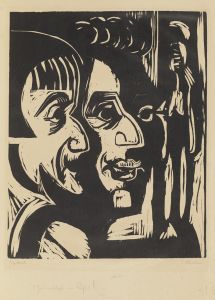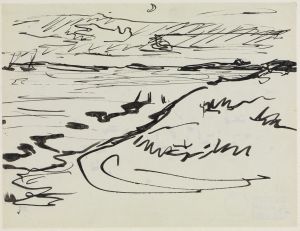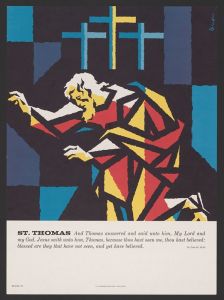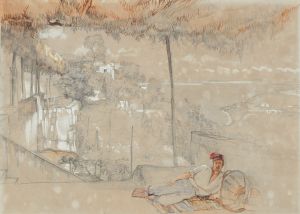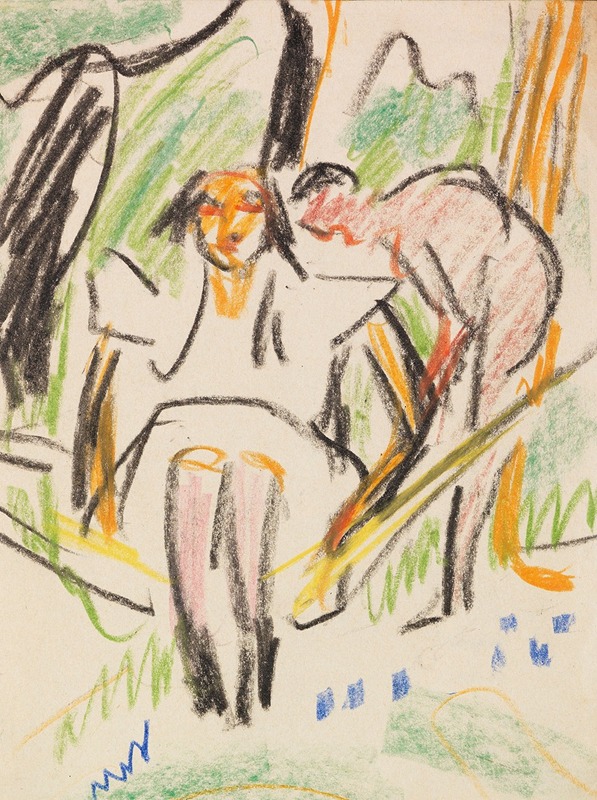
Fränzi in der Hängematte
A hand-painted replica of Ernst Ludwig Kirchner’s masterpiece Fränzi in der Hängematte, meticulously crafted by professional artists to capture the true essence of the original. Each piece is created with museum-quality canvas and rare mineral pigments, carefully painted by experienced artists with delicate brushstrokes and rich, layered colors to perfectly recreate the texture of the original artwork. Unlike machine-printed reproductions, this hand-painted version brings the painting to life, infused with the artist’s emotions and skill in every stroke. Whether for personal collection or home decoration, it instantly elevates the artistic atmosphere of any space.
Ernst Ludwig Kirchner's painting Fränzi in der Hängematte (translated as Fränzi in the Hammock) is a work created by the German Expressionist artist, who was a founding member of the influential art movement Die Brücke (The Bridge). This group, established in 1905, sought to break away from traditional academic art and embraced a more raw, emotional, and modern approach to painting. Kirchner's works often reflect the ideals of Die Brücke, characterized by bold colors, dynamic compositions, and a focus on the human figure.
The painting depicts a young girl, Fränzi, reclining in a hammock. Fränzi was a recurring model in Kirchner's works and those of other Die Brücke artists. She, along with her sisters, frequently posed for the group during their time in Dresden and later in Berlin. The identity of Fränzi is not fully documented, but she is believed to have been a local girl who had a close association with the artists. Her presence in their works often symbolized a return to innocence and a connection to nature, themes central to the Die Brücke philosophy.
Fränzi in der Hängematte exemplifies Kirchner's distinctive style, which combines simplified forms, expressive brushwork, and a vivid color palette. The painting captures a sense of intimacy and immediacy, reflecting the artist's interest in portraying unguarded, natural moments. The use of the hammock as a setting adds a dynamic element to the composition, with the curved lines of the hammock contrasting with the angular forms of the figure. This interplay of shapes and colors is a hallmark of Kirchner's approach to composition.
The exact date of the painting is not definitively recorded, but it is generally attributed to the period between 1910 and 1914, a time when Kirchner was actively exploring themes of modern life, nature, and the human form. This era also marked a significant phase in his artistic development, as he transitioned from the more decorative style of his early works to a more expressive and emotional approach.
Today, Fränzi in der Hängematte is recognized as an important example of Kirchner's contribution to modern art and the Expressionist movement. The painting is held in a private collection or museum, though specific details about its current location are not widely documented. Kirchner's works, including this piece, continue to be celebrated for their innovative style and their ability to capture the spirit of a transformative period in art history.





